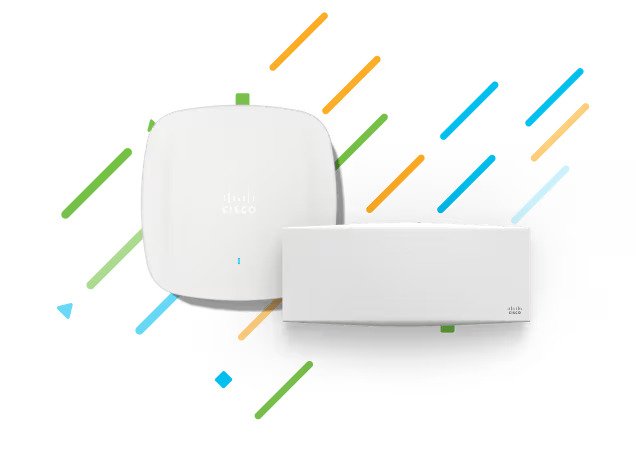Selecting the right access point is crucial for establishing a fast, secure, and reliable wireless network. Cisco Meraki provides a variety of options, but today we’ll focus on two prominent models—the Meraki MR44 and Meraki MR57. Both models feature advanced technology, yet they serve different business requirements. Let’s delve into their comparisons and see which one might be the best fit for your organization.
Overview: Meraki MR44 and MR57
Meraki access points are crafted with an emphasis on simplicity, performance, and scalability. The MR44 serves as a robust mid-range solution ideal for small to medium businesses, while the MR57 is a high-performance choice designed for large, high-density environments. Beyond just speed and capacity, let’s examine their distinctive features.
Key Considerations: Performance, Size, and Setup
- Wi-Fi Standards and Speed
- The MR44 supports Wi-Fi 6 on both the 2.4 GHz and 5 GHz bands, providing excellent performance suitable for offices and medium-sized environments.
- The MR57, equipped with Wi-Fi 6E technology, operates on an additional 6 GHz band, delivering exceptional speed and minimizing congestion in high-density areas.
- Physical Dimensions
- The MR44 is slightly smaller and more compact (9.3 x 6.1 x 1.5 inches), making it ideal for smaller spaces where aesthetics and space-saving are important.
- The MR57, larger at 11.4 x 8.0 x 1.6 inches, is designed for larger environments where performance is prioritized over size.
- Ease of Configuration
Both models utilize the Meraki Dashboard, a cloud-based interface that simplifies configuration. Whether you’re setting up one access point or hundreds, the dashboard offers:
- Plug-and-play deployment: Requires minimal technical expertise.
- Centralized management: Monitor all access points from a single location.
- Real-time troubleshooting: Identify and resolve issues remotely.
- Power Considerations
- The MR44 operates on PoE+ (802.3at), which is both cost-effective and energy-efficient, making it a great option for businesses with standard PoE+ switches.
- The MR57 operates on both PoE+ and PoE++ (802.3bt), which supports higher power levels. However, compatible PoE++ switches are necessary to utilize its advanced features like 6GHz.
- Ethernet Connectivity
Meraki MR44:
- Single Ethernet Port: 1x 1 Gbps uplink port with Power over Ethernet (PoE+) support.
- Ideal for moderate network traffic and typical enterprise applications.
Meraki MR57:
- Multi-Gigabit Ethernet Port: 1x 2.5 Gbps uplink port with Power over Ethernet (PoE++) support.
- Built for high-performance settings with significant bandwidth needs, particularly utilizing Wi-Fi 6E.
Why should you consider Meraki MR44?
If you want a budget-friendly, high-performance option, the MR44 is an excellent pick:
- Compact Design: Its smaller size allows it to fit effortlessly into office settings.
- Lower Power Requirements: It runs on standard PoE+, which helps cut down on infrastructure expenses.
- Ideal for SMBs: With support for up to 200 clients, it’s perfect for small to medium businesses such as offices, schools, or retail stores.
Why should you consider Meraki MR57?
The MR57 is designed for businesses that require top-tier performance. Here’s what makes it exceptional:
- Wi-Fi 6E Ready: The inclusion of the 6 GHz band provides quicker speeds, reduced interference, and ensures compatibility with future devices.
- High Client Capacity: Supports up to 500 clients, making it ideal for stadiums, airports, and educational institutions.
- Premium Build: Sturdy and resilient, it’s designed for extensive deployments where reliability is essential.
The Meraki MR57 is an access point built for the future, designed for contemporary networks. It supports Wi-Fi 6E for the 6 GHz band and offers tri-band connectivity across 2.4 GHz, 5 GHz, and 6 GHz. Additionally, it incorporates advanced technologies such as 4×4:4 MU-MIMO, OFDMA, and WPA3 security.
In India, any wireless device operating on the 6GHz band, including Wi-Fi 6E, requires WPC (Wireless Planning and Coordination) approval, meaning you need to obtain an Equipment Type Approval (ETA) certificate from the WPC before selling or importing such devices within the Indian market.

Special Features of Both Models
Seamless Cloud Management: The MR44 and MR57 work seamlessly with the Meraki Dashboard, offering exceptional visibility and control over your network.
Built-in Security: Meraki access points come equipped with essential security features like intrusion detection, malware protection, and device profiling to ensure your network remains secure.
Energy Efficiency: The MR44 is designed to consume less power due to its lower requirements, while the MR57 enhances energy efficiency even when operating at higher performance levels.
Final Thoughts: Choosing Between MR44 and MR57
When it comes to selecting between the Meraki MR44 and MR57, it really depends on what your business requires:
- The MR44 is an excellent option for companies seeking a cost-effective, high-performance solution that is simple to deploy and manage.
- The MR57 stands out as the best choice for organizations that demand advanced technology, future-proofing, and the capacity to support a high number of clients.
At Vays Infotech Pvt Ltd, we assist businesses in making informed choices regarding their networking requirements. Whether you need help selecting the ideal access point or implementing Meraki solutions, we are here to help! Reach out to us today to discover how Cisco Meraki can revolutionize your network.
To know more about Cisco Meraki Solutions, click here on Cisco Meraki
